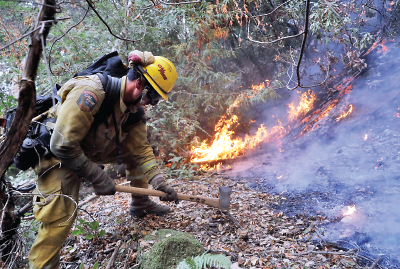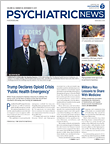The three-month period between August and November is typically grape-harvesting season in northern California’s wine country and one of the prettiest times to visit a region of the country that is always scenic. “[T]he weather is a little cooler, the grapes are ripe, and everywhere is bustling with activity” is how a typical wine-country website (winefolly.com) describes it.
But many in northern California will remember this year’s harvest season differently after the wildfires that burned for six days in early October destroyed more than 200,000 acres and forced the evacuation of some 90,000 residents. Thousands of homes, farms, and wineries, many of which were family owned, were destroyed.
As of October 28, when Sonoma County hosted a Day of Remembrance at Santa Rosa Junior College, the wildfires had killed 42 people in four counties—23 of whom lived in Sonoma County. The youngest victim was 14; the oldest, 100.
Acutely, there was a widespread sense of “vulnerability and helplessness,” Northern California Psychiatric Society (NCPS) President Firdouse Huq, M.D. (pronounced Huck), told Psychiatric News, “because it appeared that the vast areas of fire in Napa, Sonoma, and Solano were not containable.” As residents return to the parched and smoking landscape and deal with clean up or rebuilding, there will be the aftereffects of trauma and the demoralization associated with trying to start anew.
Huq works as a psychiatrist in a state prison under the California Correctional Health Care System in Solano County and lives with her husband in American Canyon, known as the “gateway” to Napa County. Within seven miles of her home is the Jamieson Water Treatment Facility, which provides most of the water supply for the region.
She described a tense two-day period during which firefighters fought urgently to contain the fires—which Huq described as “leaping over highways”—and prevent the destruction of the treatment plant, an outcome that might have been catastrophic.
“I learned to pack the basic essentials in five minutes in a carry-on bag to work,” Huq recalled. “I remember on October 11, I looked back at our home with anguish, wondering whether I was going to return home from work that evening.”
Also threatened with closure and evacuation was the Napa State Hospital, with some 1,200 patients with chronic, serious mental illness. “The decision to contain the fire to protect this facility was a step in the right direction [to avoid] disrupting the care of chronic, severely mentally ill patients,” Huq said. “Those were the tense moments while the fire was raging beyond control.”
By October 15 the fires were largely contained, and many in the region who lived within range of the fires had been on high alert around the clock. The deteriorating air quality alone caused many to disperse. “Many in and around Napa had packed their cars and were ready in case they needed to evacuate on a moment’s notice with family and children,” Huq said. “And many health care professionals and allied professionals who are colleagues were directly or indirectly impacted, each with their individual stories to tell.”
On October 11, the NCPS in conjunction with APA released a statement alerting the public about resources on how to minimize the possible mental and emotional effects of trauma caused by the wildfires. “Traumatic events affect survivors, emergency workers, and the friends and relatives of victims who have been involved,” Huq said in the statement. “As psychiatrists, we understand the event may cause significant distress and pose potential threats to the mental health of all those involved. It is important for everyone to know that help is available, and treatment does work.”
A number of resources are listed on the NCPS website, including coping strategies and mental health resources.
Prior to the wildfires, a nine-member “wellness” committee of NCPS established a “Collegial Resource Hotline.” NCPS members can call the main hotline number or one of the nine wellness committee members whose names and phone numbers are listed.
Members are encouraged to call about anything they want to talk about, either confidentially or not, relating to their own health and wellness and their psychiatric practice.
The webpage listing the collegial resource hotline states its purpose as follows: “Managing stress in psychiatric practice keeps us well and averts burnout.”
The APA Committee on Psychiatric Dimensions of Disaster has a wide range of resources on the APA website for clinicians and the public about coping with disasters. There is also a link to the website of the Center for the Study of Traumatic Stress (CSTS) at the Uniformed Services University, which posted “California Wildfires Disaster Recovery and Response Resources.” The posting states: “Grief is a near universal experience for those directly impacted by an extreme natural disaster, such as the California wildfires. In the immediate aftermath, loss of home, possessions (such as pictures, keepsakes, and other items which comprise our lives), and life routine cause feelings of grief. Loss of control, life routine, as well as familiar people and places often compound feelings of grief. Affected individuals often experience a decreased sense of safety and heightened feelings of fear and threat.”
As has been highlighted in so many stories in this season of disasters, the fires of Northern California also brought out professionalism and a willingness to sacrifice for the community. The California Psychiatric Association reached out to its membership after being contacted by the California Department of General Services with an urgent request for state-licensed mental health professionals to provide services to first responders and those caring for the disabled, veterans, and elderly directly affected by the fires.
“One of our own psychiatrists working in the correctional facility was under voluntary evacuation order in Green Valley, Solano County, and relocated temporarily with a friend between October 11 and 15,” Huq said. “During this time, in spite of being evacuated, she returned to work every day, just as most of us did.” ■
APA’s disaster resources for psychiatrists can be accessed
here. “California Wildfires Disaster Recovery and Response Resources” is available
here. The NCPS’s resources are located
here.

